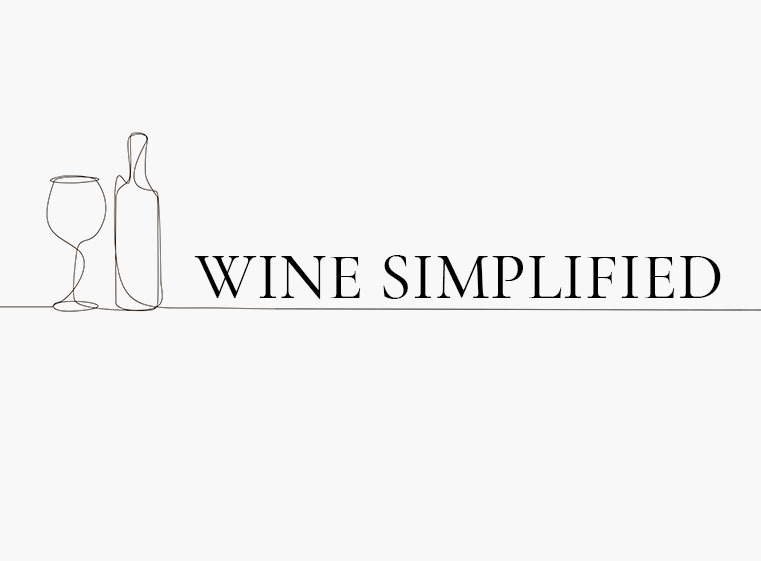Wine Term: Varietal
Variations: Single varietal, Varietal wine
What it really means: The wine is made from* and labeled as a single grape variety.
A varietal wine is labeled as a single grape wine. Examples would be wines labeled as: Cabernet Sauvignon, Pinot Noir, Chardonnay, Sauvignon Blanc, Merlot, Riesling, etc.
A wine with multiple varieties of grapes are labeled as blends (the opposite of varietal wine). Some areas of the world label as: “Red Blend” or “Meritage” or “GSM” (SMG, GMS, or our all time favorite: MSG) for just a few examples, but other areas of the world label their blends based on the region or village it comes from, examples being: Bordeaux, Burgundy, Côtes du Rhône, Porto, etc.
Ready for a curve ball? Because in the wine world, those are all over the place…
You might be a producer in Châteauneuf-du-Pape. Maybe you produce a wine 100% from the Grenache grape. Technically it’s a varietal wine then, right? Yes, it is, but wait…nope. By law, you need to label as “Châteauneuf-du-Pape” which is a village listing for a Red Blend. When your bottle makes it to market it is not a varietal wine (even though it actually is), it is a blend, and labeled as such due to French laws about labeling and producing in your region. It will not say, “Châteauneuf-du-Pape Grenache” – it will simply say “Châteauneuf-du-Pape” – the French justify this by the belief that the Châteauneuf-du-Pape name resonates with more weight and portrays a level of quality that far exceeds what exactly went into the bottle.
The only area of France that breaks with this tradition is the Alsace. Once a part of Germany (where wine is labeled by varietal, not village devotedly), the region kept their labeling traditions when they were annexed to France. In addition to Germany and the Alsace, America, South Africa, Australia, and New Zealand label varietal wines.
Not enough curveballs for you? It gets more confusing…
In California, if you label as a “Meritage” (which is a blend, not a grape type or varietal wine), and you follow the Meritage production rules, you don’t need to list the percentages or the grapes on your label. This is justified by the 90% rule and acceptable grapes for a blend labeled as such (a devoted post for another time, sorry, but briefly: the wine needs to be 100% of the noble Bordeaux grapes and one of them making up 90% of the blend). But all this unbeknownst to you, you think it’s a varietal, and no one can fault you for that, until now, because you’ve been informed. Which is to say…hardly fair.
And one final devastating curveball for anyone seeking a firm definition of varietal vs. blend (the noted amendment in the simplified definition at the top of this section):
*Depending on the appellation you choose to print on your wine, in America only 75% or 85% needs to be the actual variety you print, the remaining 15% or 25% can be blended from other non-listed grapes. How does this look?
A “California Pinot Noir” must be at least 75% Pinot Noir from anywhere in California and the remaining 25% could be Chardonnay from California, but never list Chardonnay anywhere on the bottle, however a more specific AVA like “Sonoma Coast Pinot Noir” must be at least 85% Pinot Noir from the Sonoma Coast region, and the remaining 15% can be split up between a bit of Chardonnay, maybe a touch of Syrah too, but none of that is listed on the label either.
For a series called “Wine: Simplified” this seems like anything but simple, right?
Here is an easy 3-step process to wrap your head around it all:
- Assume all wines are some level of a blend, no matter what the label says (unless it is printed with something like “100% Malbec” – then you can truly trust it is nothing but Malbec in the bottle).
- If it says a single grape name on the label, it is a varietal wine (even though other grapes could possibly have been blended in).
- If it has a village name, region name, none or multiple grapes listed on the label, it is a blend wine.
How to effectively use it:
a single grape ≠ a varietal
Varietal is a wine made from a single grape, a single grape is a variety of wine grape.
grape(s) = variety(varieties)
When discussing wines with multiple grapes, it’s not made from multiple varietals, it’s made from multiple varieties, and thus, is a blend.
varietal = wine from a single grape
The only time it’s appropriate to use “varietal” is in reference to a wine that states it’s made from a single grape (even if there’s some other magic worked in there), as that is a varietal wine.

